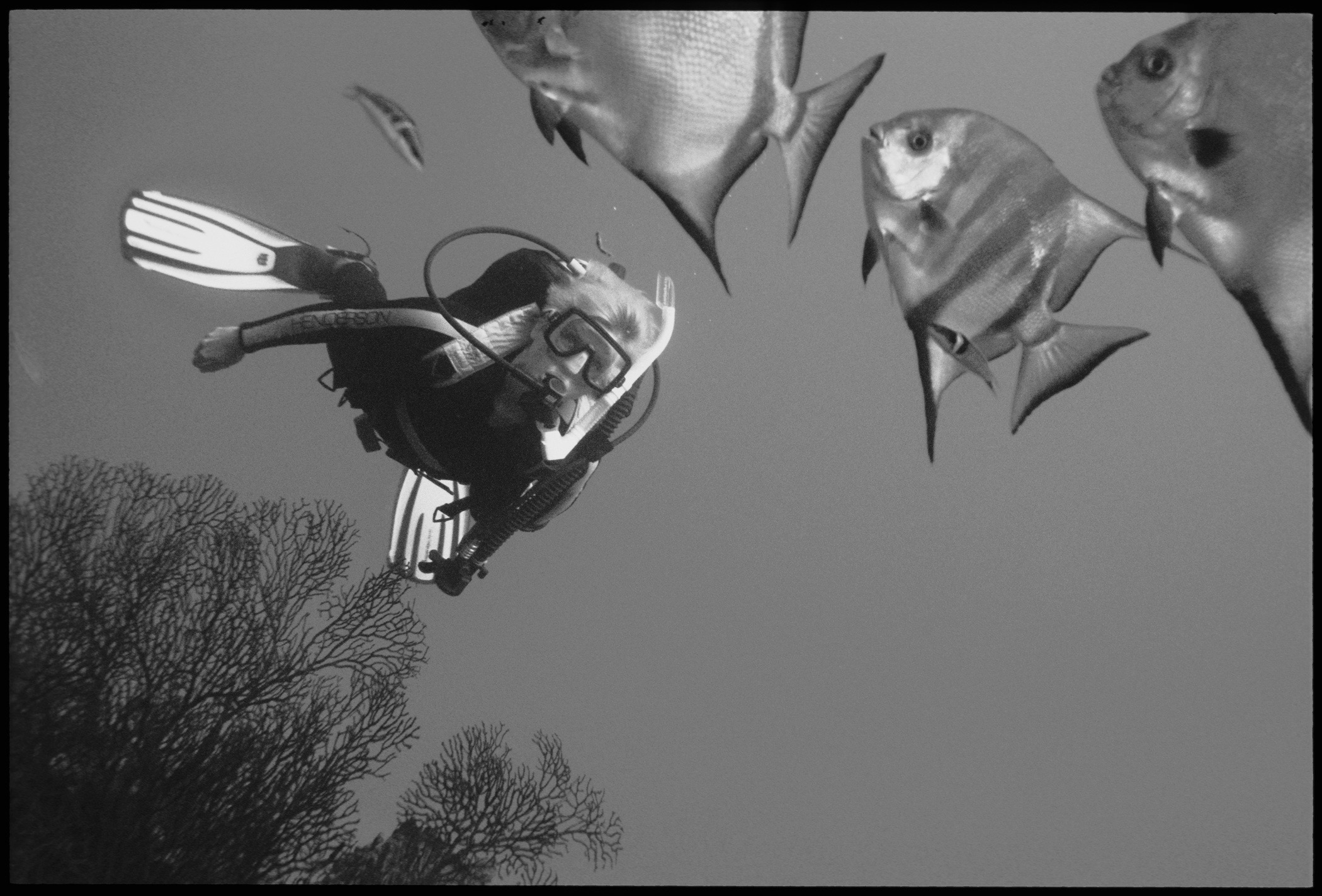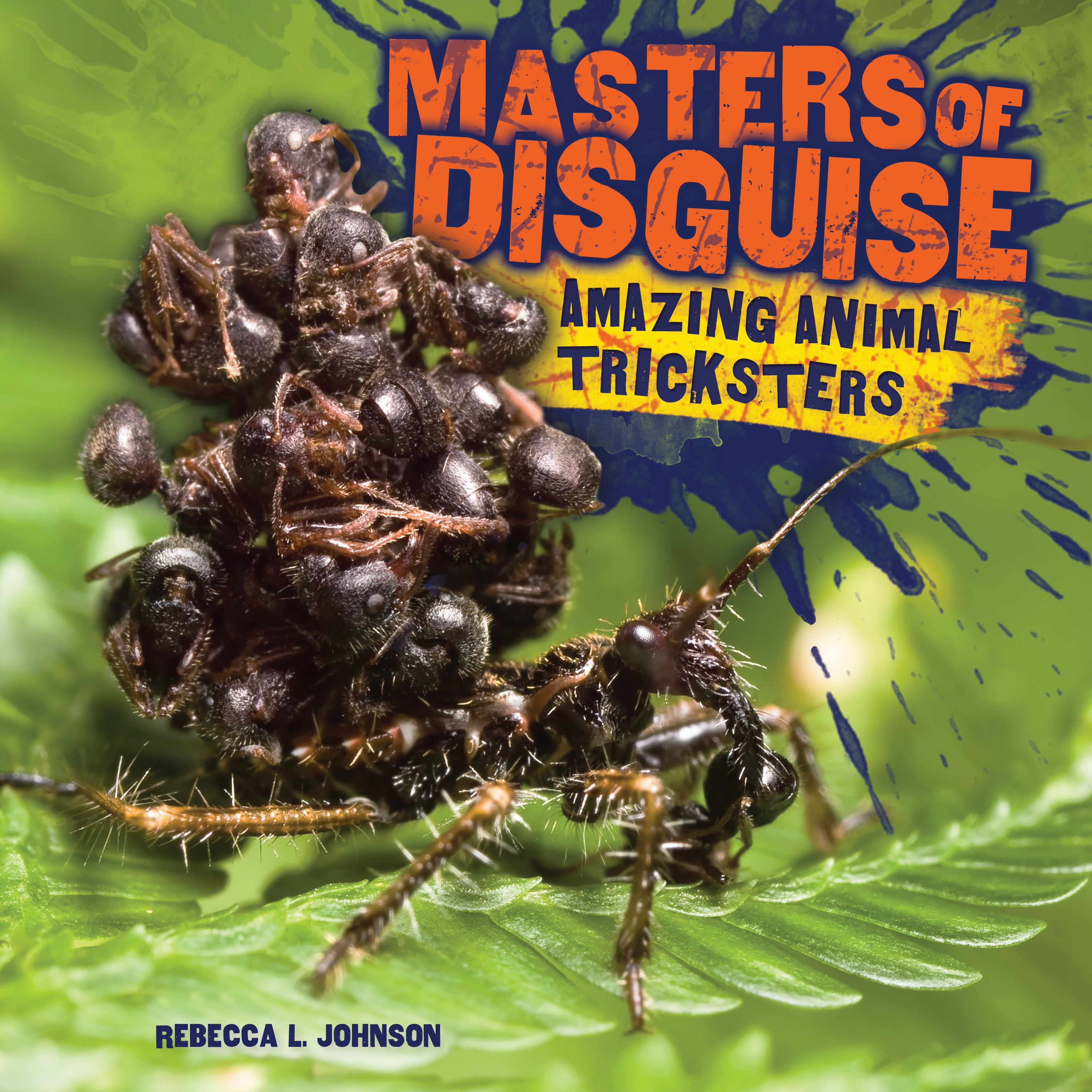Millbrook Press 2016
ISBN 9781512400878
48 pp. hardcover
Grades 4-6
In the animal kingdom, survival is the name of the game, but not everything is as it seems. Some animals rely on particularly clever tricks to fool predators or prey. A baby bird mimics a poisonous caterpillar. A moth escapes bats by making sounds that interfere with the bats’ echolocation. A tiny rain forest spider builds a big spider “puppet” out of bits of dead leaves, insect parts, and other items. Learn about some of nature’s most bizarre and bloodthirsty con artists and meet the scientists who are working to figure out just how they pull off their amazing tricks.
Reviews & Awards

A Junior Library Guild Selection
2016 Cybils Finalist
ALA Notable 2016
Kirkus Reviews, starred review
“Disguises are common in nature, but here, Johnson puts the spotlight on nine creatures who take mimicry or camouflage to a whole different level. From a rain-forest bird called the cinereous mourner, whose fuzzy orange chicks not only look but even move like a certain poisonous caterpillar, to a small spider that builds a big, eerily realistic spider-shaped ‘puppet’ from found materials, most of the lineup here will be new even to well-read young naturalists. Most are also both recent discoveries and the subjects of ongoing study, and after profiling the distinctive capabilities or behaviors of each animal, the author follows up with a ‘Science behind the Story’ introduction to the findings and hypotheses of zoologists engaged in that research. Along with portraits of these scientists in their natural settings (indoors and out), the excellent photos offer revealing views of each insect or other trickster, of select body parts, and of characteristic predators or prey. Rightly expecting that readers are going to want to know more after these tantalizing glimpses, the author closes with professional source notes as well as leads to further general information in print and on the Web. From an assassin bug’s ‘Coat of Many Corpses’ on, a truly astonishing look at some of nature’s most ingenious predatory or survival strategies.”
School Library Journal
“Duped! Hoodwinked! Bamboozled! Animals have long developed fantastic traits and abilities, or disguises, to help them survive and navigate their environment. Johnson hooks readers with gripping descriptions, close-up photographs, and profiles of the various scientists dedicated to studying these animals. Each creature and scientist combo is given four pages―just enough to whet readers’ appetites. As Johnson includes more recent discoveries (Cyclosa, the ‘puppeteer spider,’ was discovered only in 2012), readers will feel the rush of learning something before anyone else. Scientists working in both field and lab are presented in candid photographs. With an almost equal number of men and women scientists featured, this work makes it easy for today’s students to picture themselves in similar scientific shoes. VERDICT: This exciting and easy-to-digest title will make for an excellent purchase and addition to booktalk lists.”
Booklist
“This biology guide wastes no time, digging with relish into some of the weirder aspects of animal camouflage. First up, an African assassin bug or Corpse Collector, which kills ants and sticks their shells to its back. This bizarre disguise serves a dual purpose, hiding the bug so that unsuspecting ants come closer while protecting it from its own predators. Many of the camouflaging critters discussed are insects, but there are plenty of others. A gliding lizard has skin flaps that make it look like a falling leaf. A harlequin filefish not only looks like coral, it smells like it, too. And baby cinereous mourners, a bird in the Amazon, have feathers that mimic a poisonous caterpillar. Each chapter is well organized into two parts, the first about the type of disguise an animal uses, the second on the scientific explanation of it, and each includes close-up photos of the creature in question and additional images of scientists in action. Extensive back matter provides further resources for budding scientists interested in digging a little deeper.”




